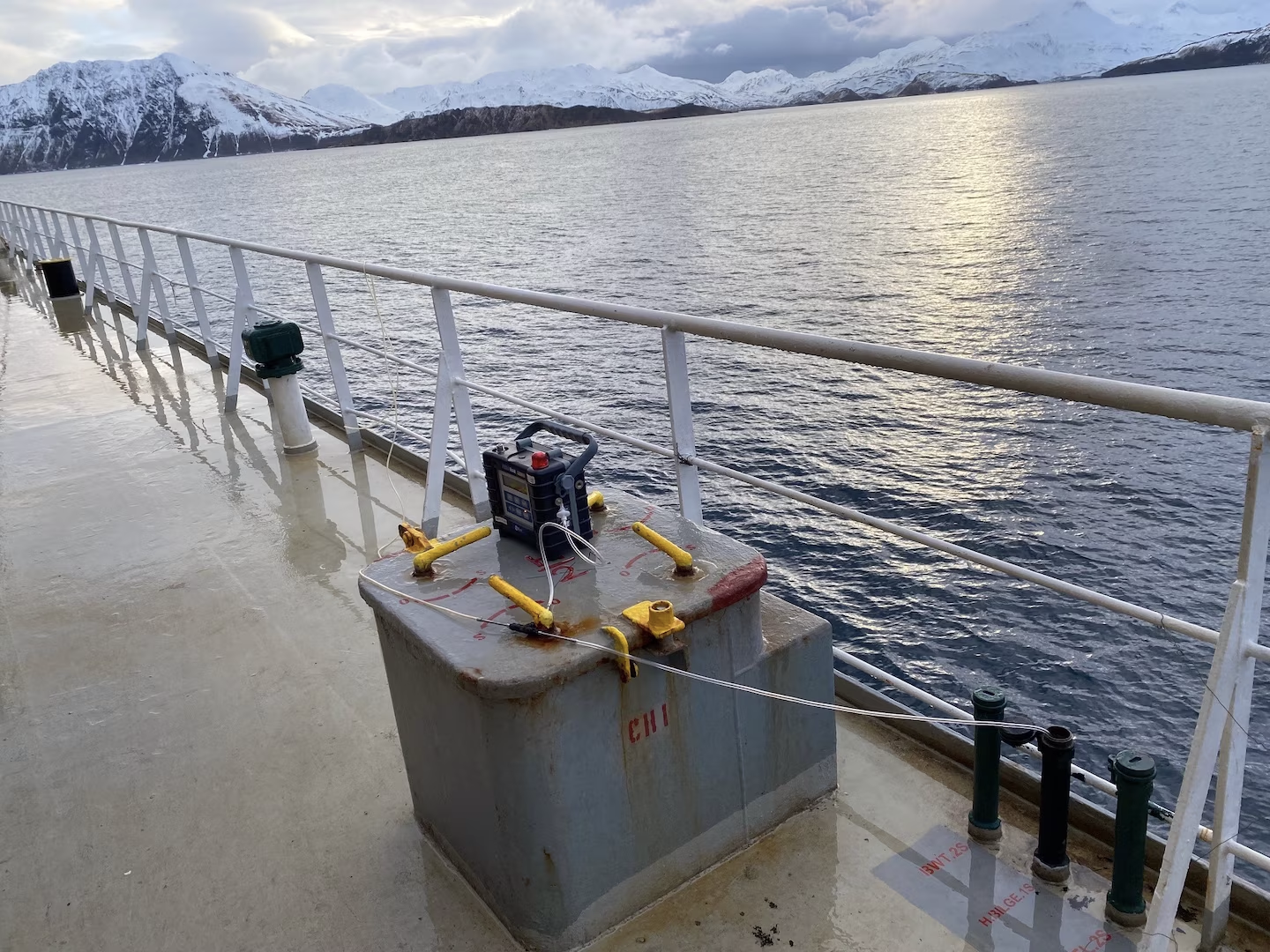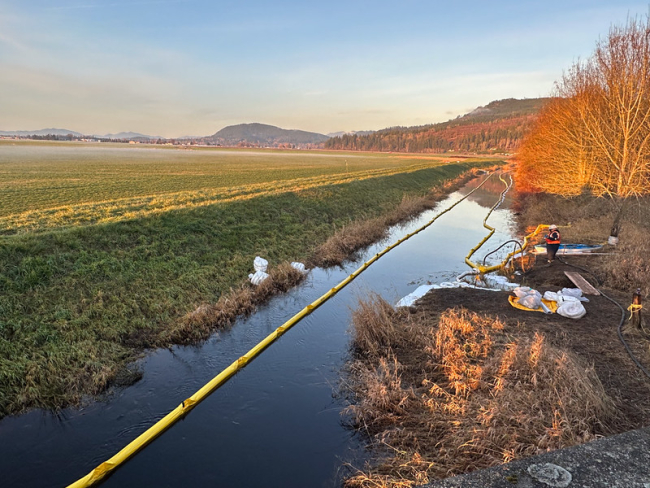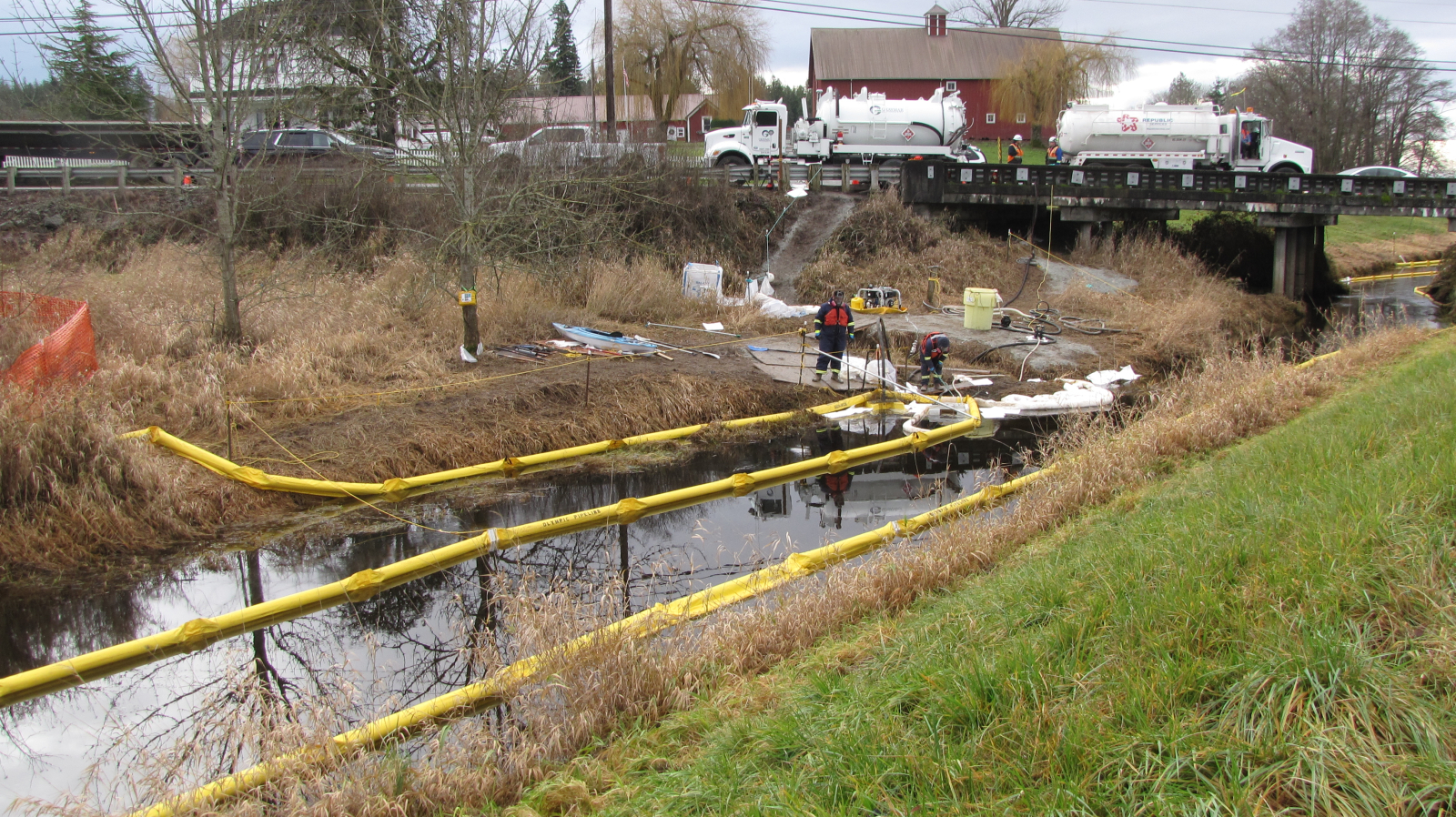Every month, NOAA’s Office of Response and Restoration (OR&R)’s Emergency Response Division provides scientific expertise and services to the U.S. Coast Guard (USCG), ranging from producing oil spill trajectories that estimate where a spill may spread; to identifying possible effects on wildlife and fisheries; to estimating how long oil may stay in the environment. We also receive requests to track and model other floating objects, such as log booms or shipping containers that have broken free, whale carcasses, fish die-offs, and algal blooms.
In 2023, OR&R has provided support for 162 incidents. During December, OR&R provided response support for 25 incidents, including 13 new incidents in nine different states. The 13 new incidents included 10 actual or potential oil spills, two chemical incidents, and one “other”—a dead fin whale. OR&R staff prepared 153 incident reports and documents, including five fate and trajectory analyses. Cumulatively, these incidents posed an approximate risk of more than 168,000 gallons of oil and chemicals.
(Note: All spill volumes are approximate and based on initial information that may be updated after further investigation.)
Fire onboard M/V Genius Star XI near Dutch Harbor, AK

This incident illustrates the serious challenges inherent in fighting a cargo fire at sea, compounded by the unique risks of burning lithium-ion batteries.
On December 25, the 410-foot cargo vessel Genius Star XI experienced a fire onboard in its Number 1 cargo hold during a voyage from Vietnam to California The vessel’s primary cargo was 828 metric tons of lithium-ion batteries.
Following response protocols, the vessel used its CO2 fire suppression system, and the fire was believed to be extinguished. No injuries were reported among its crew of 19. On the Great Circle route across the North Pacific Ocean that transits along the Aleutian Islands, the vessel was diverted from its original destination of San Diego towards Dutch Harbor, Alaska.
On December 28, the USCG Sector Anchorage Command Center was notified of a second fire, in the Number 2 cargo hold. Due to exhausting their CO2 suppression system on the first fire, the crew worked to cool the cargo hold boundaries with seawater and monitored the fire with onboard sensors.
USCG District 17 launched the Coast Guard Cutter Alex Haley and an HC-130 airplane to the incident to gain greater situational awareness and determine additional assistance needs. Genius Star XI proceeded with a plan to transit to a mooring buoy near Dutch Harbor, maintaining standoff from areas-to-be-avoided along the islands. There, a marine firefighting team boarded the vessel to assist. They assessed that the situation was stable and there were no further indications of heat in the cargo holds. A one-mile safety zone was in effect around the ship, and salvors remained on board to monitor the situation.
The NOAA scientific support coordinator for Alaska was notified on December 28 and coordinated HYSPLIT atmospheric plume modeling for a potential fire on the ship, in the event of a recurrence. She reported to the Incident Command Post on January 2 and assisted with development of the air monitoring plan, and plans for re-establishing normal air circulation in the cargo holds. She served as chair of the daily Technical Expert Advisory Group with representatives from the battery manufacturer, technical experts on lithium battery emergencies, the salvage team, the air monitoring contractor, and the Environmental Protection Agency (EPA).
The Unified Command (consisting of the USCG Captain of the Port and representatives from Gallagher Marine Systems and the Alaska Department of Environmental Conservation) continues to work closely to coordinate response efforts on this incident. Once response operations are complete, an investigation will be conducted to determine the cause of the cargo hold fire.
Olympic Pipeline Gasoline Spill at Conway Station; Skagit County, WA
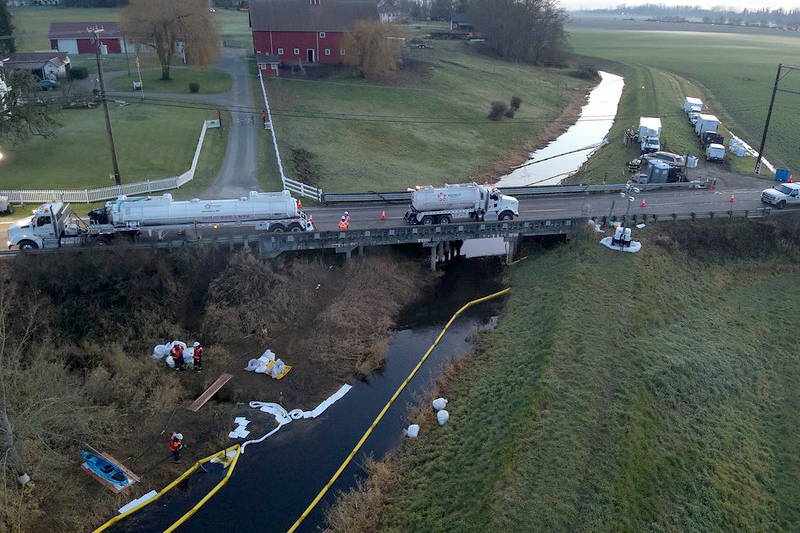
On December 10, the EPA notified the NOAA scientific support coordinator (SSC) for the Northwest of an oil spill at Conway Station in Conway, Washington, approximately one mile east of Interstate-5 in Skagit County. The pipeline owner, BP, reported that a pipeline carrying gasoline had a pressure loss, and began a series of steps to shut down the main pipeline. Approximately 30,660 gallons of gasoline were initially reported to have been released; of that, approximately 5,000 gallons remained in the vault. Residual pressure caused the release of gasoline to continue for several hours. The pipeline was four feet underground, and there was an unknown maximum potential of gasoline released.
Oil was observed in nearby Hill Ditch and Bulson Creek, and there was a smell of fumes and gasoline in the area of the release. BP, the EPA, and Washington Department of Ecology sent responders on-scene.
The Unified Command leading the response (comprising representatives from the EPA, Washington Department of Ecology, Skagit County Department of Emergency Management, BP, Lummi Nation, and the Swinomish Indian Tribal Community) determined that the pipeline had actually leaked approximately 21,168 gallons of gasoline. The Unified Command determined that a small tube between the main portion of BP’s Olympic Pipeline and a pressure sensor had failed, spilling gasoline into the nearby creeks.
Spill boom was deployed at various locations in Hill Ditch and Bulson Creek, as far as 2.25 miles downstream of the release site to contain and collect floating oil from moving further downstream. Hill Ditch and Bulson Creek both support salmon and many species of waterfowl and other wildlife. The Skagit River basin, key to salmon recovery in the state, is home to several salmon restoration projects, and the Fisher Slough—a 60-acre freshwater tidal marsh restoration project on the South Fork Skagit Delta. The Nature Conservancy of Washington, with other partners, designed Fisher Slough to restore processes, structures, and functions for salmon species, as well as improve flood storage and tidal function in the delta.
At least one American beaver, one pine siskin (bird), and one mallard duck have been discovered in the vicinity of the spill. Air monitoring conducted by the Department of Ecology and by BP continued to indicate no public health risk from gasoline fumes.
During the course of this response, the NOAA SSC and science teams supported the EPA response team with Endangered Species Act consultations; liaised with the Environmental Unit and the scientific community to provide advice with various response questions; provided technical review of the mass balance of the gasoline; and coordinated with the National Weather Service for daily site-specific weather forecasts for operational and safety planning. NOAA Fisheries supported the Environmental Unit with plans for response and fish identification. Staff from OR&R have begun their work on a Natural Resource Damage Assessment (NRDA).
After regulatory approval, the pipeline system was restarted on December 13.
Explosion and Fire at Tradebe Environmental Services; Bridgeport, CT
On December 29, while a chemical tanker truck was offloading at Tradebe Environmental Services in Bridgeport, Connecticut, an explosion occurred, followed by a substantial fire. Police evacuated a two-block radius around the scene of the explosion and advised other residents nearby to shelter in place to avoid smoke exposure. All residents and businesses were allowed back into the area later that evening once air quality was determined to be safe.
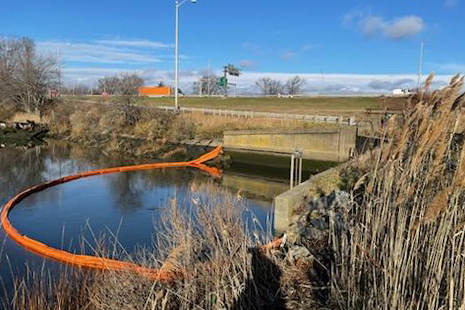
As part of the firefighting effort, a large amount (an estimated 18,000 gallons) of firefighting wastewater, with unknown chemicals, leaked into a stormwater drain and spilled into small creeks outside of Bridgeport, Connecticut, upriver from the Stewart B. McKinney National Wildlife Refuge.
On December 30, USCG Sector Long Island Sound (LIS) contacted the NOAA scientific support coordinator (SSC) to request expertise from OR&R’s Emergency Response Division. The NOAA SSC notified NOAA Fisheries and the U.S. Fish and Wildlife Service. Representatives from the EPA, USCG, and Connecticut Department of Energy and Environmental Protection (CT DEEP) reported on-scene.
It was reported that 4,000 gallons of a low-grade oxidizer was being offloaded at the time of the explosion. Chemical tests of the wastewater found high ph levels and elevated levels of Chromium. OR&R’s chemistry response team advised the USCG of the highly toxic nature of Chromium, which will persist in the environment for some time.
On December 31, some discoloration in the water was observed at one collection point; however, other locations where boom was deployed appeared clear. An oil spill response organization deployed spill boom, as well as vacuum trucks to skim the surface. Approximately 30,000 gallons of milky water was recovered on-scene.
On January 2, responders from USCG Sector LIS observed a storm drain flush-out, where 6,000 gallons of water was put into the storm drain across from the location of the chemical fire. A vacuum truck skimmed sheen from a boomed location, where light and weathered sheen was observed. No fish kills or injured wildlife were observed on-scene.
Cleanup continues at the site of the fire under the supervision of CT DEEP. Two sheen samples were taken by USCG for future analysis, should the sheen persist. The emergency response phase is wrapping up and remediation will be led by EPA or CT DEEP.
Here is the complete list of December’s incidents. Click on the links to find out more:
- Explosion and Fire at Tradebe Environmental Services; Bridgeport, CT
- Sheen in/near Bar Harbor South Marina; Ketchikan, AK
- Fire onboard M/V Genius Star XI near Dutch Harbor, AK
- Sodium Chlorate Spill, Port of Seattle; Seattle, WA
- Fuel Spill from Fishing Vessel; Tampa, FL
- Submerged Barge, Newtown Creek; Brooklyn, NY
- Diesel Spill from Fuel Tank at Fire Station; Point Lay, AK
- Pusher Tug Capsized/Sunk, Willamette River; Gladstone, OR
- Fin Whale Carcass on Pacific Beach; San Diego, CA
- Olympic Pipeline Gasoline Spill at Conway Station; Skagit County, WA
- Jet Fuel Spill from Tanker Truck at JFK Airport; New York, NY
- Sailboat Aground off Plymouth, MA
- Potential Vessel Discharge, West Cameron 513 block; Offshore Texas


